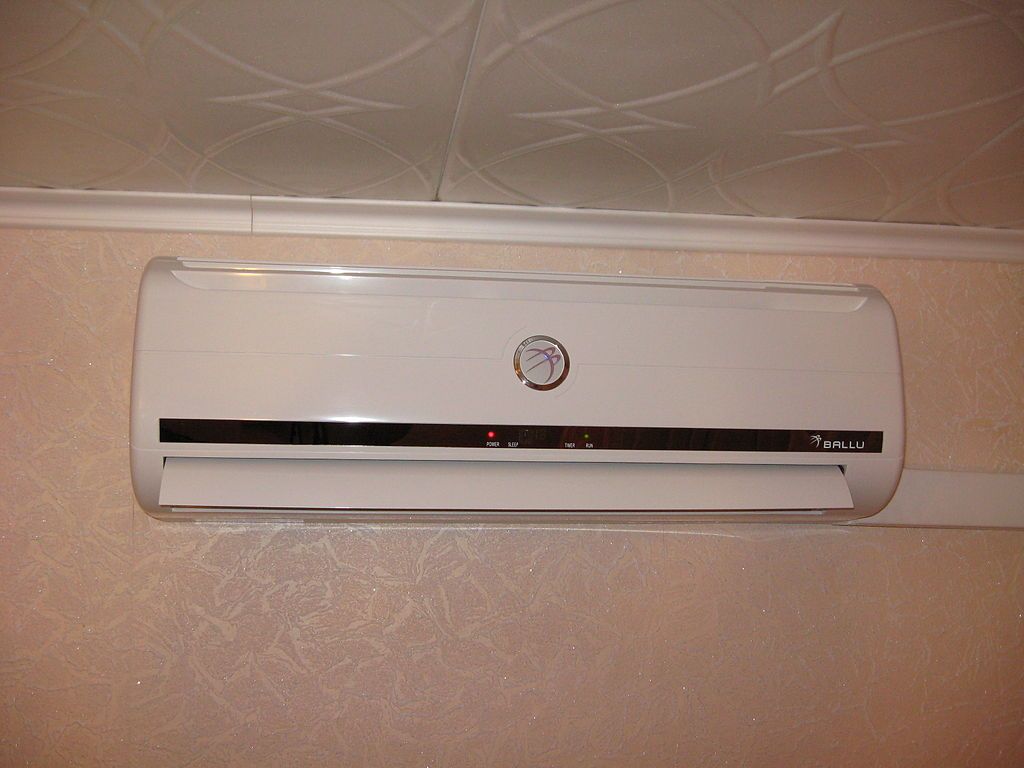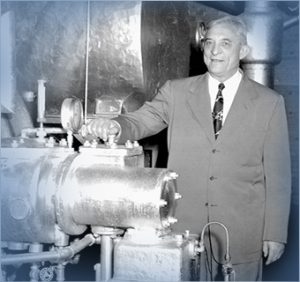The Rise of the Air Conditioner

Air conditioning essentially has its foundation in second century China where an inventor called Ding Huane created a manually powered rotary fan.
Later in 1758, Benjamin Franklin and John Hadley (a chemical professor) conducted experiments using evaporation to cool objects. Franklin noticed that a thin layer of ice formed on the bulb of the thermometer they were using, from which he concluded that “one may see the possibility of freezing a man to death on a warm summer’s day”.
In 1842, John Gorrie, (a physician) created a device that made ice using compression and then blew air over the ice. He used the device to cool the air for his hospital patients. He intended to one day use this crude air conditioner to cool other buildings, and even imagined a centralized air conditioner to cool whole cities. His invention wasn’t perfect and sometimes leaked or malfunctioned, but nevertheless, he was granted a patent in 1851 for his crude air conditioner. Unfortunately, his dreams melted away when his primary financial backer passed away. Dr Gorrie also passed away impoverished in 1855, and everyone seemed to forget about air conditioning for the next half-century.
In 1881, naval engineers built a cooling unit for American President James Garfield when he was shot by an assassin. The unit was filled with damp cloths and ice, and a fan was used to blow air and keep him cool. The unit was successful in lowering the temperature by almost seven degrees Celsius. Less successfully, it used over 225,000 kilos of ice in two months… and President Garfield died anyway.

In 1902, Willis Carrier wanted to find a way to get rid of the inconvenient, uncomfortable humidity that filled the air at a printing company he worked at in Brooklyn, New York. He built a machine that would blow air over cold coils, controlling the humidity and saving paper from wrinkling and ensuring ink alignment. So temperature cooling was not even the original goal of air conditioning, but merely a refreshing by-product on the quest to quell humidity.
The idea came to Carrier when he was on a Pittsburgh train station platform early one morning. It suddenly occurred to him that he could dry air by moving it through water and leave behind the fog. By doing this, he realises he could create air with particular levels of moisture. His vision came to life within a year when he unveiled his invention on 17 July 1902. It took a further six decades before air conditioners became popular and accessible in America.
On January 2, 1906, Carrier was granted patent number 808897 for his air conditioner which he called an ‘apparatus for treating air’. In the same year, Stuart Cramer (a textile mill engineer) created a device using the same technology for the opposite effect. His device created water vapour or humidity. These were used in textile plants, making the yarn easier to spin and tougher so it wouldn’t break. He was the first to actually call this process ‘air conditioning’.
In 1914 the first home air conditioner was installed in a mansion belonging to Charles Gates. The air conditioner was about two metres high, two metres wide, six metres long and it’s possible that the device was never used because nobody even lived in the house…
On May 15, 1928, Carrier sold his first compact ‘unit air conditioner’. It was smaller and manufactured with retail shops in mind. It was sold first to Merchants Refrigerating company to control the temperature in their egg storage room.
In 1931, H.H. Schultz and J. Q. Sherman invented an individual room air conditioner or window unit as we now know them. They were available for purchase in 1932 but were only accessible to the rich, who were the least likely to work up a sweat anyway! They cost 10-15 thousand dollars, equivalent to 120-600 thousand dollars today.
In 1939, Packard released the first air-conditioned car. If the driver decided they were getting too cold, the driver would have to stop, pop the hood and disconnect the compressor belt to turn off the air conditioning. Dashboard controls didn’t come in until later.
In the 1950s post-war economic book, air conditioners in the home became widely popular and accessible to the public. Over one million units were sold in 1953. In the 1970s central air conditioning overtook window units.
The Carrier Company still uses the same basic concepts for their air conditioners, but they have had major advancements since the original model, including areas such as diagnostics, electronic sensors and energy efficiency.
Thanks to Carrier, many industries arose that would have otherwise not been possible. The industrialized production of things as diverse as baked goods and war supplies were made possible by air conditioning. Movie theatres thrived with their summer blockbusters by enticing punters to escape the heat in their cooled theatres. Shopping centres, computers, and Internet servers are also all indebted to Carrier’s invention over one hundred years ago. Onya Carrier!
